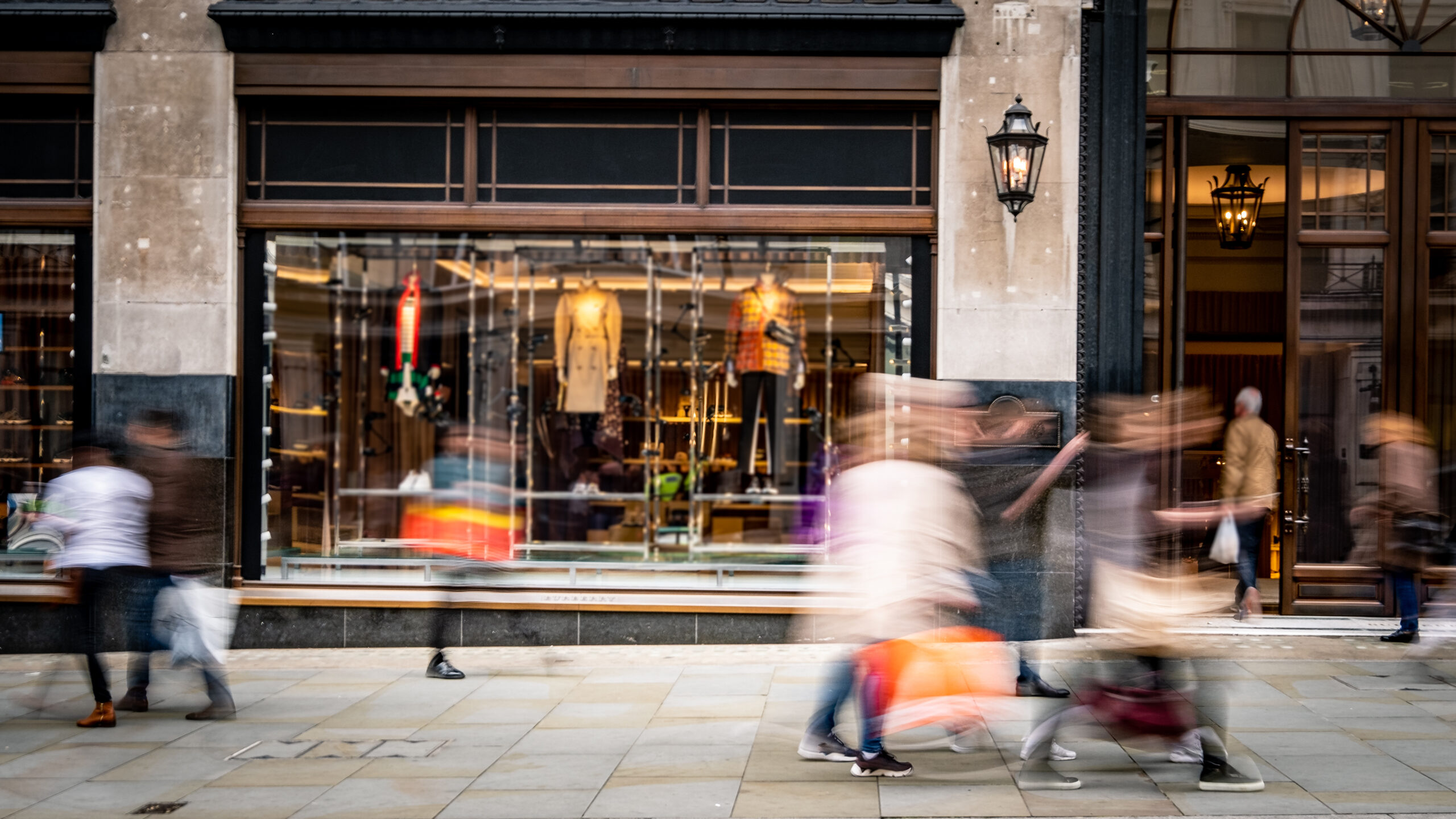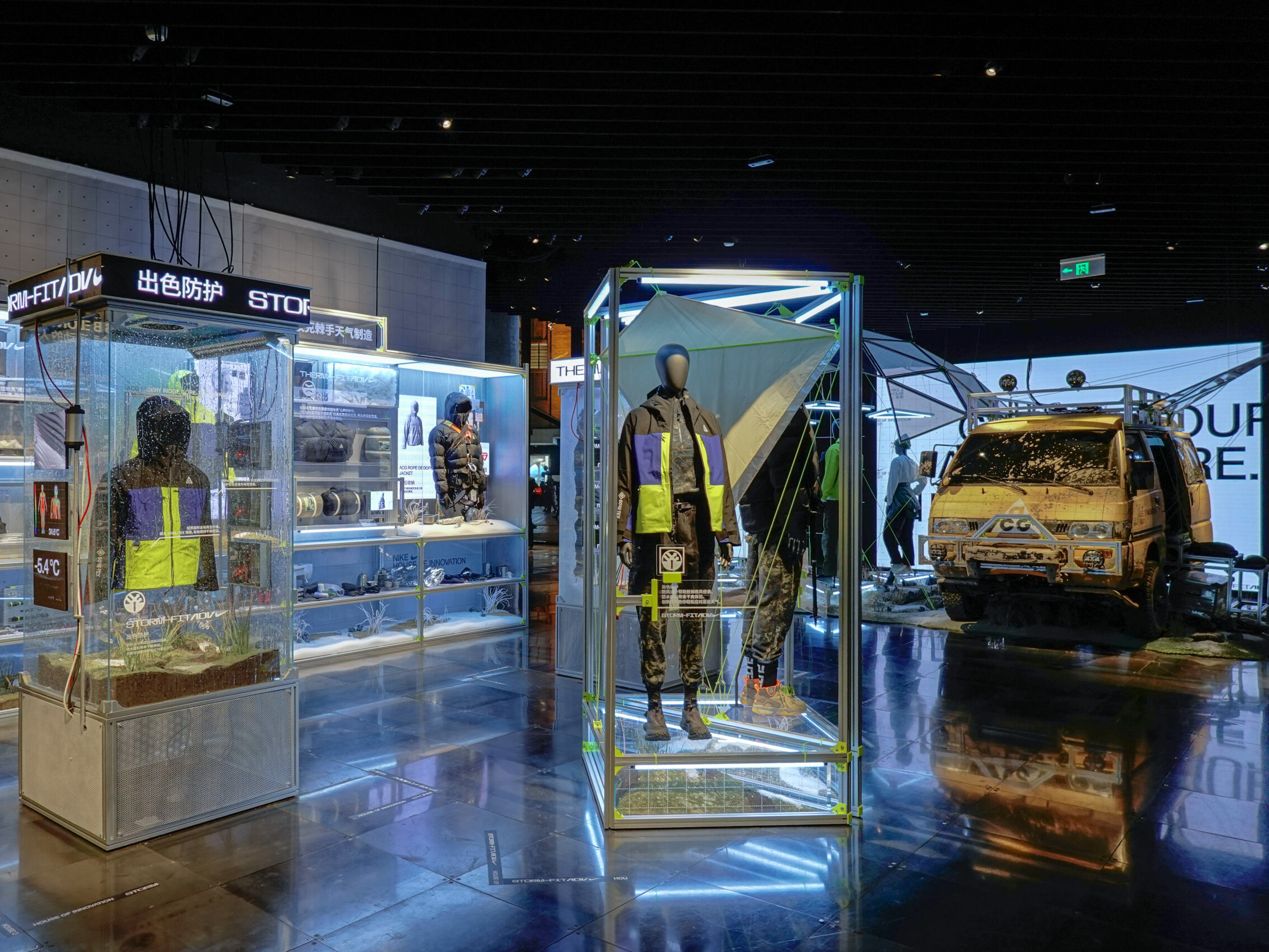Last fall, French footwear brand Veja planted its flag in Madrid’s architecturally-rich (and pricey) Justicia neighborhood, often dubbed the “Paris of Madrid.” More than just a brand expansion, the new 190 sqm store embodies the essential elements that retailers need to understand and embrace in 2024 and beyond.
Visually, Veja’s new location incorporated the sustainable brand’s value-driven approach to retail design. But more importantly they prioritized an elevated customer experience by offering a permanent cobbler station for beloved Veja repairs, fostering both loyalty and convenience.
Beyond its retail function, the store also features a dedicated event space to bring together interesting people and projects, nurturing not just customer enjoyment, but perhaps more importantly, employee inspiration and engagement. For sales associates of the cult sneaker brand, this wasn’t just a store – it was a gathering place.
Veja’s Madrid store, with its focus on prime real estate, elevated customer experience and engaged employees, serves as a potential blueprint for European retailers navigating the ever-evolving market. As we progress through 2024 and towards the future of retail, this store highlights the importance of these three aspects alongside fluctuating consumer spending power.
To offer a clearer perspective on the European retail market’s current outlook, Uptify delves into these four key areas:
1) Increasing Demand for Prime Real Estate:
The scars left by pandemic disruptions and evolving consumer preferences still faintly mark the retail real estate landscape. However, 2024 reveals the glimmerings of a cautious resurgence.
One key driver of this optimism lies in the global stabilization of office occupancy, particularly in Europe. This translates to increased daytime foot traffic, injecting a dose of vibrancy into retail spaces. This revitalization coincides with a renewed enthusiasm for brick-and-mortar shopping amongst young consumers. Their desire for shopping as an activity has ignited demand for prime real estate locations.
However, e-commerce remains a force to be reckoned with. While it will continue to hold a dominant position, its growth is expected to moderate. This could help pave the way for the aforementioned increase in flagship stores in prime locations.
But beneath the surface of this cautious optimism lies a layer of strategic challenges. Rising costs in rent, construction and labor necessitate a shift in strategy for retailers. Today, each location must be meticulously chosen and meticulously managed, ensuring it transforms from a destination into a true revenue driver.
This requires a data-driven approach to location selection, focusing on areas with high foot traffic, strong demographics and a healthy mix of complementary businesses. Additionally, retailers need to reimagine their store experiences, fostering a sense of community and offering unique value propositions that cannot be replicated online.
2) Fluctuating Spending Power
While the European retail landscape faced significant challenges in 2021-2023, glimpses of cautious optimism are emerging for 2024 and beyond. Several key factors underpin this sentiment, primarily driven by improvements in consumer fundamentals.
Stabilising inflation rates and rising wages are expected to translate into modest increases in spending power. This positive trend is further bolstered by relatively healthy savings levels among consumers in key markets like the UK, Germany and France. These accumulated savings offer a buffer against potential future economic uncertainties.
Beyond domestic factors, the gradually recovering tourism sector offers a boost (more favourably in the EU versus the UK). Tourists returning to European destinations will not only inject vital revenue into the travel and hospitality sectors, but also spillover into retail spending, impacting local businesses. Additionally, predicted falling inflation leading to rising real wages further supports the prospect of increased retail sales despite broader economic uncertainties.
However, it is crucial to acknowledge that significant challenges remain. The initial shock to consumer confidence following the outbreak of the war in Ukraine, while temporary, exemplifies the volatility inherent in the current geopolitical climate. Additionally, the lagged effect of recent interest rate hikes remains a downside risk that requires close monitoring.
“The retail market is experiencing a recalibration of consumer priorities, with a burgeoning focus on human connection replacing the allure of solely technology-driven experiences.”
3) Prioritising Employee Retention
The retail landscape is in a state of flux, with customer expectations and journeys evolving at a breakneck pace. To stay ahead, retailers must recognize the power of mobile-powered “EXTech” (employee experience technology) to engage their workforce. EXTech is a diverse collection of solutions designed to improve the employee experience and unlock the full potential of frontline employees to deliver exceptional service by motivating employees, encouraging desired behaviours and positively shaping organisational culture. This makes EXTech a strategic imperative for retailers looking to stand out. By empowering and engaging employees through these mobile tools, businesses not only improve retention but also invest in their greatest asset, ultimately driving long-term success.
The evidence is compelling. Studies reveal that highly engaged teams demonstrably outperform their counterparts, boasting a staggering 21% greater profitability. This quantifies the direct correlation between employee satisfaction and a thriving business.
Investing in a positive employee experience transcends pure financial gains. By embracing EXTech and fostering a culture of engagement, retailers can cultivate a workforce of skilled and motivated individuals that fosters long-term customer relationships built on trust and familiarity. This stability empowers stores to operate with greater autonomy, allowing them to adapt and cater to the unique needs of their local communities, fostering authentic connections that drive loyalty and advocacy.
4) An Elevated Customer Experience
The retail market is experiencing a recalibration of consumer priorities, with a burgeoning focus on human connection replacing the allure of solely technology-driven experiences. This trend, dubbed the “human-as-premium” label by Mintel, signals a significant shift in consumer expectations, placing a premium on personalised interactions and emotional engagement.
Research reveals that nearly half of consumers are concerned about interacting with AI more than with humans. This highlights a deep-seated desire for empathy and personalised service that only human interaction can provide.
This necessitates a rebalancing of priorities for retailers. While technology can undoubtedly enhance efficiency, brands must invest equally in community engagement. This translates to empowering employees to deliver meaningful connections with customers, fostering memorable experiences that go beyond mere transactions.
Furthermore, the concept of “intentional spending” suggests that consumers are placing greater value on quality experiences throughout the purchase journey. This extends beyond the product itself. Consumers no longer view elements like sustainability initiatives, convenient access, brand heritage and flexible payment options as extras. These factors have evolved from mere perks to essential expectations, forming the baseline for a standard customer experience. These elements collectively contribute to a holistic perception of quality and are increasingly considered integral features of a premium experience.
Are you ready to transform your retail strategy for the future? Contact Uptify today for a free consultation and discover how we can help you navigate the European market and achieve lasting success.



